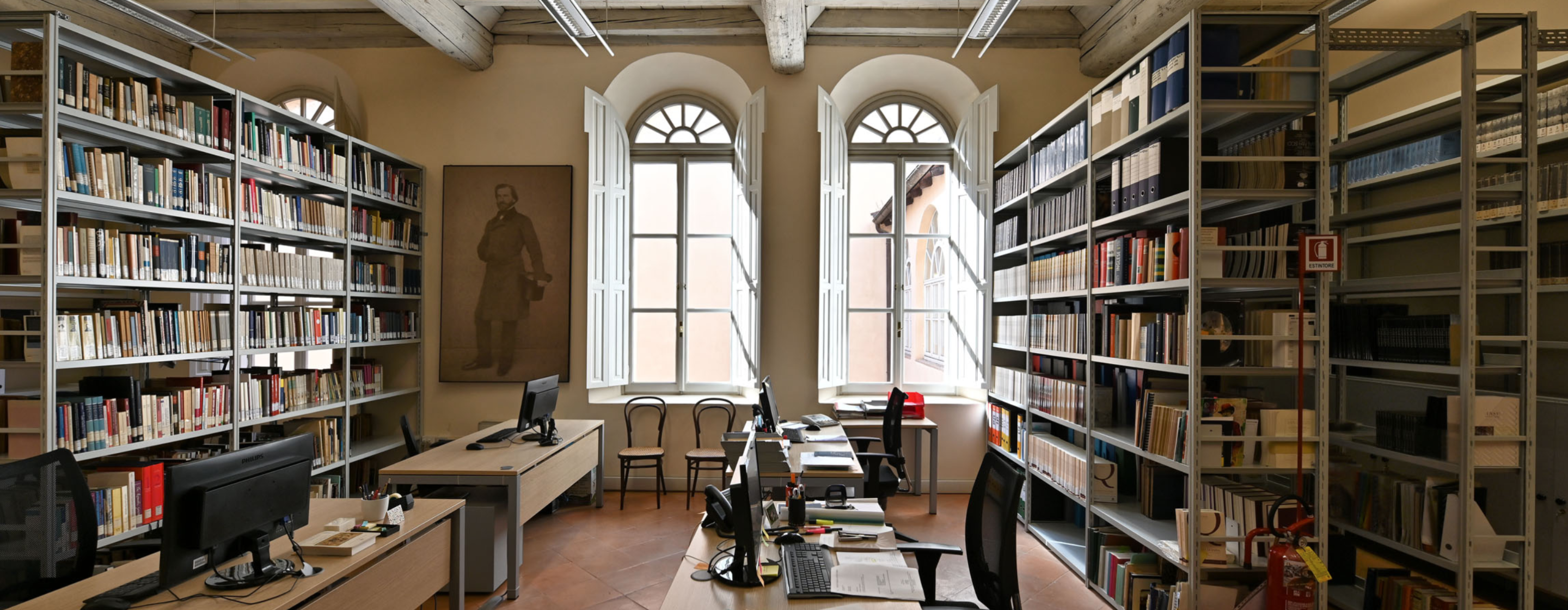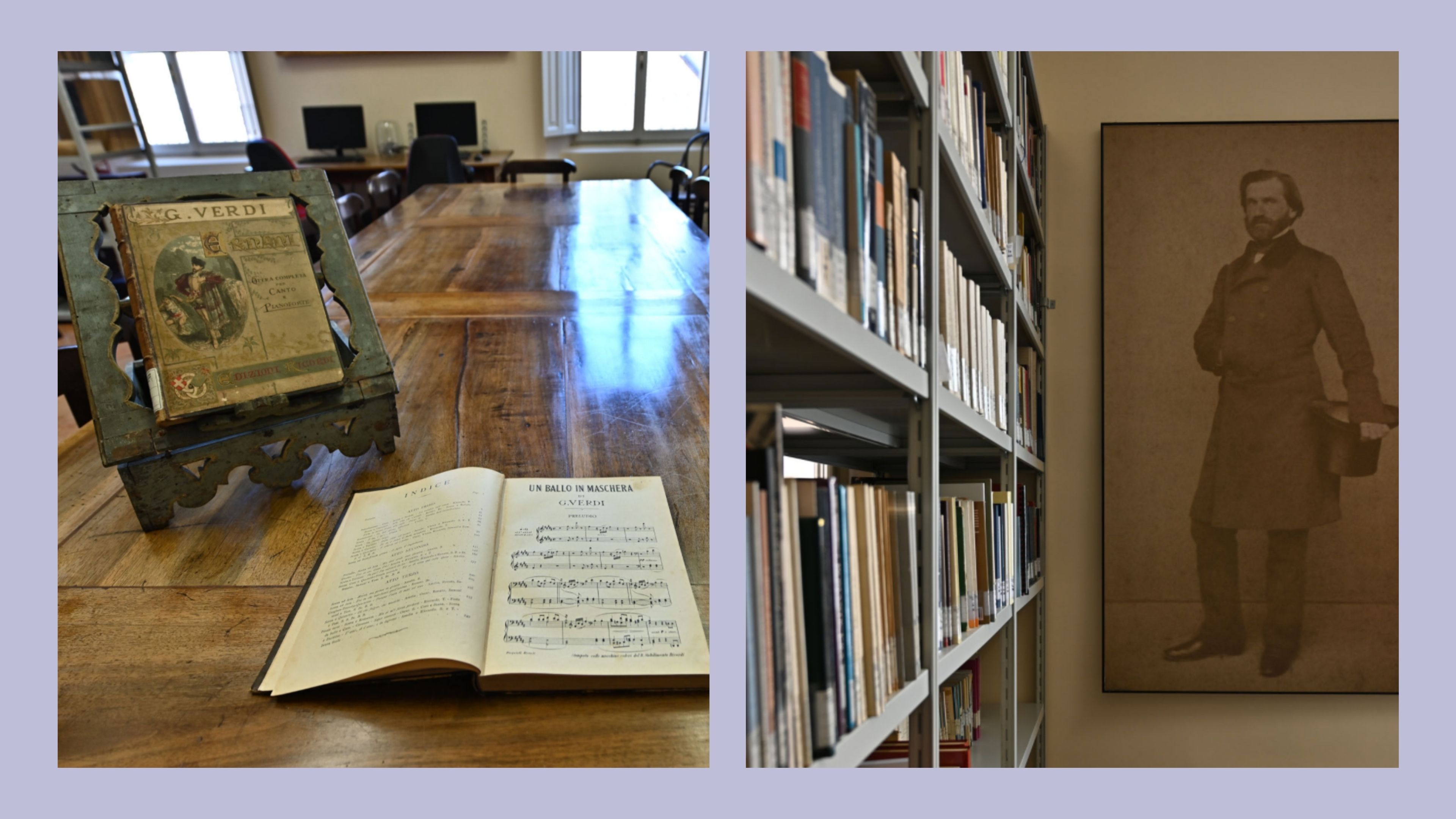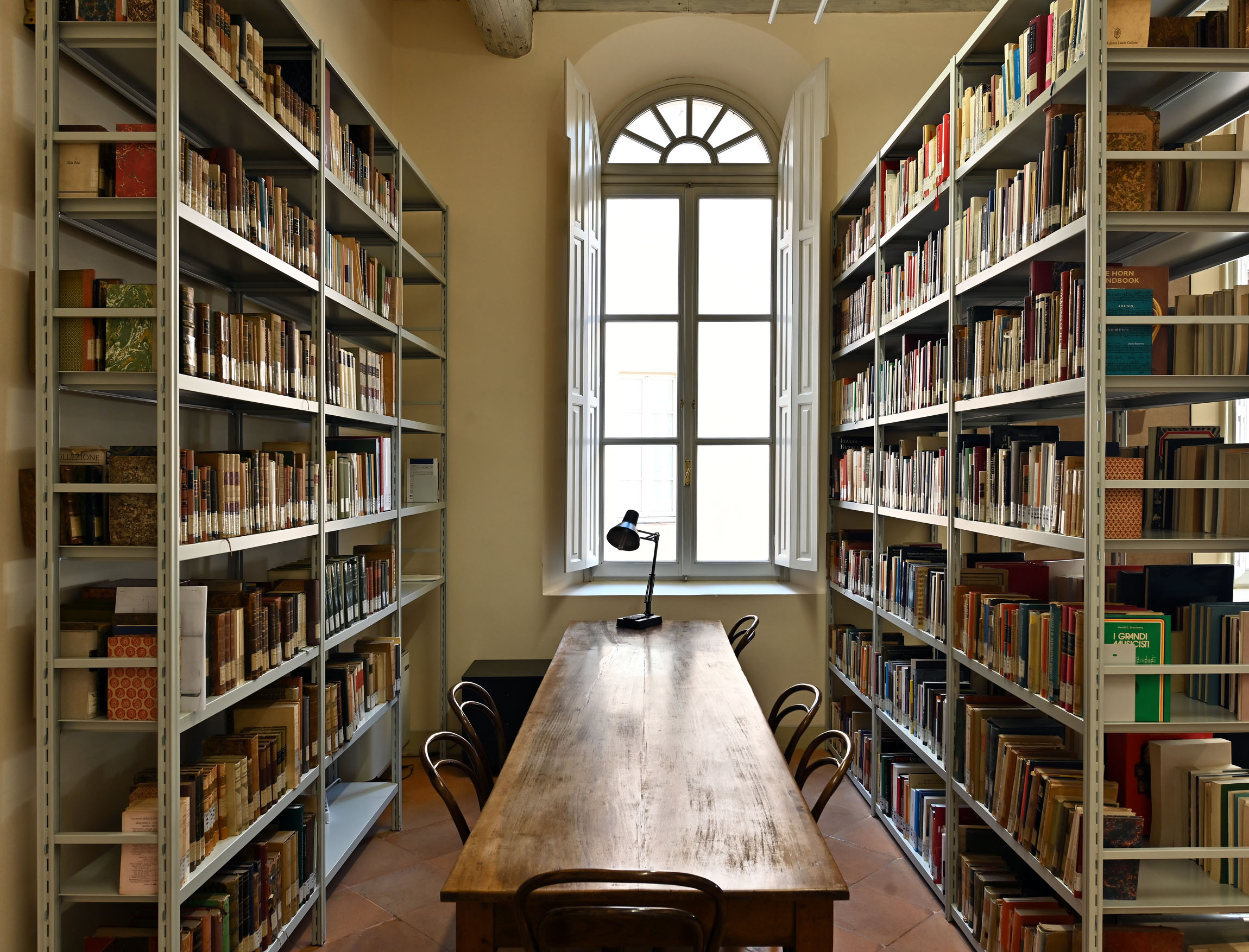Collections
Library

The Institute features a specialised library with approximately twenty thousand books focused on Verdi but also including music and the musical theatre of the 19th century, manuals, repertoires, musical and historical sources. It is therefore able to support the study of Verdi’s work in its historical context. The entire library collection is accessible on the “Parma’s Library System” and on the OPAC SBN.
The core of this collection consists of the musicology section devoted to Verdi’s work and biography; it consists currently of almost thousend published titles starting from the late nineteenth century, it is constantly enriched and included all the Institute’s publishings from the beginning.
This central core is complemented by five other essential sections, because these collect fundamental sources for any study about Verdi. The first one hosts many collections of Verdi’s correspondence published from the early twentieth century until today, including the critical editions of correspondences published by the Institute. The second one collects either originals or copies of a wide range of pamphlets and articles appeared from the nineteenth century until today on both Verdi’s figure and work. The third section is dedicated to scores and reductions of Verdi’s music, among them obviously the published volumes of the critical edition of Verdi’s operas “Works of Giuseppe Verdi”. The fourth one collects the literary sources linked to Verdi’s opera production, the originals and with Italian translation, on some occasions original editions viewed by Verdi and his librettists. The fifth one includes a precious collection of Verdi’s opera “libretti”, most of them originals, including the ones belonging to the very first productions.

Apart from non-fiction and “libretti” we may find a copious collection of theatre programmes of Verdi’s productions starting from post-war years, most of them from important Italian and foreign theatres (“Teatro alla Scala” of Milan, “Teatro La Fenice” of Venice, “Teatro San Carlo” Naples, “Teatro Regio” of Turin, “Teatro dell’Opera” of Rome, “Teatro Regio” of Parma, “Teatro Massimo” of Palermo, “Teatro Carlo Felice” Genoa, “Covent Garden” of London).
Extremely rich are the shelves dedicated to history and chronology of Italian theatres and many of the major foreign theatres, to the nineteenth-century theatre and musical history, to music theory, to organology, to technique and history of vocality, to scenography, to music publishing. We may find of course also encyclopaedias and reference dictionaries. Furthermore, being aware of the indispensability of placing Verdi’s figure in the history of his time, a specific shelf presents a collection of nineteenth-century historical, literary and theatre essays.

A wide library wing collects essays about the music masters from the eighteenth to the twentieth century. In this respect, and with the purpose of interacting with the homologous Verdi’s sections, we also find the collection of originals “libretti” about opera productions. But particularly interesting is the rich collection of operas and choral-symphonic compositions with reductions to vocal and piano scores (some for other chamber ensembles), published from the twentieths of the nineteenth century to the forties of the twentieth century. In 1974 a donation to the Institute from the soprano Carmen Asensio Scalvini and her husband includes 427 volumes of which 57 are Verdi’s scores. Among others, a complete edition of the Salmi by Benedetto Marcello and the Ricordi edition in 38 volumes of Gioachino Rossini’s operas, published from 1854 to 1867, stand out.
